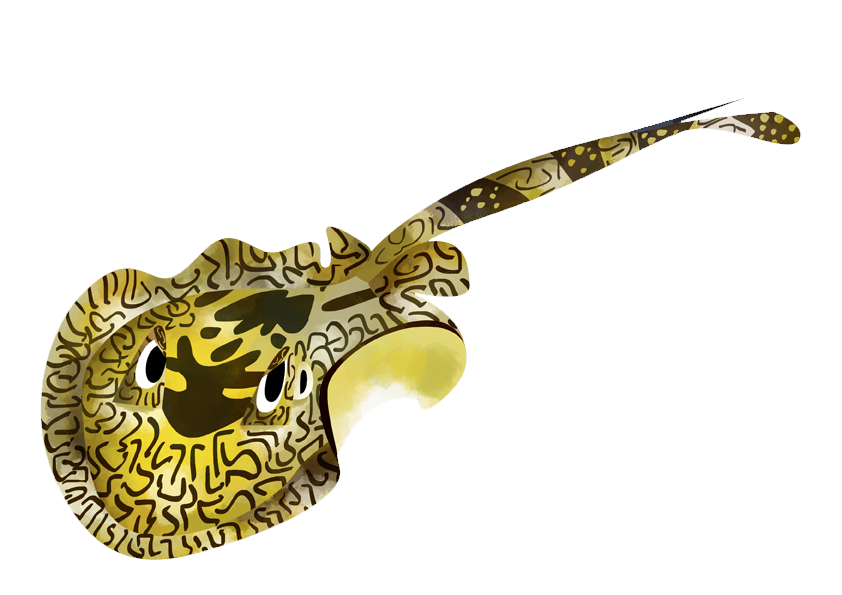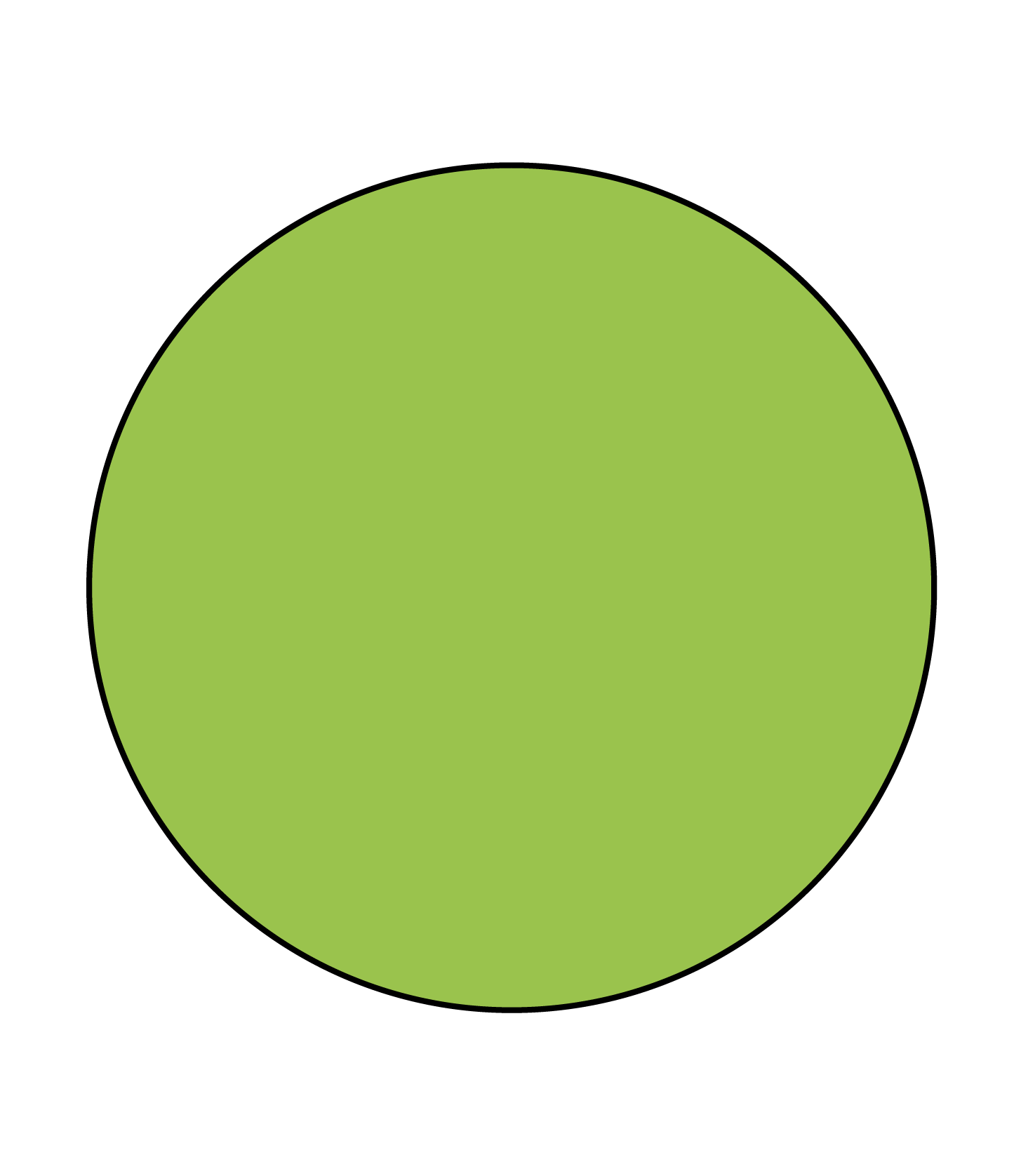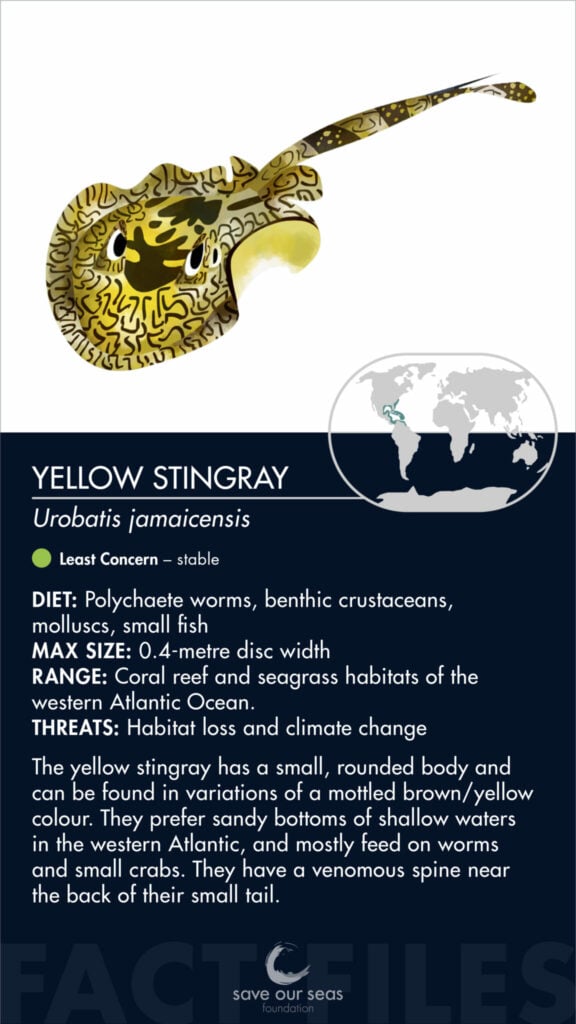Yellow stingray
Urobatis jamaicensis



Yellow stingrays have a small, rounded body and can be found in variations of a mottled brown/yellow colour. They prefer sandy bottoms of shallow waters in the western Atlantic, and mostly feed on worms and small crabs. They have a venomous spine near the back of their small tail.

Identification
Yellow stingrays are quite a small, round stingray with a yellow or brown, and sometimes even white, colour. They have a caudal fin that extends around the tip of the tail, and the spine is located just behind this fin. They are only found in shallow waters of the western Atlantic.
Reproduction
Yellow stingrays are ovoviviparous, meaning eggs develop and hatch internally, with the embryos sustained by a yolk sac. Females reproduce every two years, and have small litters of 1 to 5 pups at a time. Females will mature at approximately five years of age, and live to as many as 14 years.
Habitat and geographical range
Yellow stingrays are found in coral reef and seagrass habitats of the western Atlantic Ocean. Their range extends from North Carolina in the US, throughout the Caribbean and Gulf of Mexico, to Guyana in South America.

Diet description
There is little information on the diet of yellow stingrays, but it’s thought to consist of worms, shrimp, other benthic invertebrates and small fish.
Threats
Yellow stingrays are one of the few ray species for which overfishing is not considered a major threat – it is not commercially targeted but is sometimes caught as bycatch and retained as bait. However, habitat loss through coastal development and climate change is a significant potential threat as this species relies so heavily on coastal reef and seagrass habitats in the tropics. They are also collected for aquariums. No population declines have been reported for yellow stingrays, leading the IUCN Red List to categorise them as Least Concern.
Relationship with humans
Yellow stingrays have limited interactions with people. They are not targeted in commercial fisheries but are sometimes retained in artisanal catches for bait. They are quite popular for personal aquariums. Like other stingrays they do possess a sting but pose little danger to people – an accidental sting will be painful, but rarely life threatening.
Fun Facts
Yellow stingrays glow in the dark! They are bio-fluorescent and can glow green, possibly for communication or camouflage.
They have 360-degree vision from their periscopic eyes – good for detecting predators.
They are capable of using magnetic fields to navigate.
References
Peter Last, et al, 2016, Rays of the World.
IUCN, 2021, Yellow stingray: Urobatis jamaicensis




